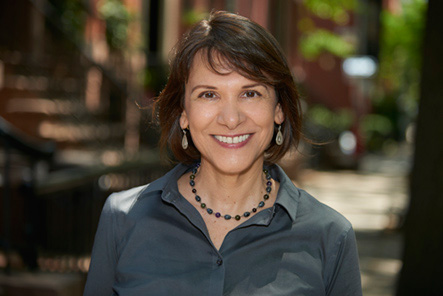The word Focusing means something very specific in the therapy world.
Think of Focus, Mindfulness, and Stillness. That’s close, but the focusing I am referring to is Internal Relational Focusing (say THAT 3 times fast!).
This sort of Focusing cannot be without the body. I’m not talking focusing on your crooked knees or love handles. I’m not even talking about feeling the body, exactly.
Focusing is sensing the body, from the body’s point of view.
Sound simple? It is, except it’s really really hard and takes lots of practice to find that “felt” experience and when you do, you realize there is so much more to know and find out about what your body wants to share with you.
Sound confusing? It is! Or at least we can make it confusing if we think about it too long.
That is why the creator of “Focusing”, Eugene Gendlin, calls it a “Felt Sense”. It is a bodily feeling, or a “meaningful bodily experience”, in other words. Gendlin wrote books, lectured about this and offered training too.
Focusing is feeling inside your body where it is not clear.
Going to places in your body, a sensation, or a feeling that is not quite clear what it is, but you know it is there.
A Focuser will be interested in this murky, unclear zone and in time find something not known before, or not understood the same way before. Remember, this is the body communicating, not a typical verbal dialogue.
Here I mean an inner response can arise that is beyond our conditioning. It is new, fresh, it is what wants to be known .
For instance, I used this technique with a client feeling confused and seeking answers outside of himself. The client said “I have this thing I am supposed to do and I can’t figure out what is keeping me from doing it. I am so confused and frustrated, a real man would know what to do.”
I acknowledged his experience, then invited him to notice where he was, what his body was doing, to notice his breathing, etc. When one does this, awareness already begins to shift. This is inviting a somatic experience.
My job as a therapist is to let the client have their experience, be with it, and hold space to allow whatever wants to emerge to emerge. When we take time, invite attention and get curious, things will spontaneously show up.
Focusing does not analyze or measure, it simply allows the process to unravel and allows for feelings, sensations, memories, or associations to emerge and be felt. The information is coming in from the body, not the mind. It becomes a somatic experience. A somatic experience allows the body to process unresolved feelings, often from a trauma, hanging around as stuck energy in the body, to move and be experienced in a meaningful way, and to find an emotional and/or physical resolution.
The client in the example above was able to find clarity through Focusing that enabled him to feel and believe in his OWN “manhood”.
How “Focusing” became a thing.
After Gendlin developed this idea of Focusing, Ann Weiser Cornell and Barbara McGavin took it to the next level. They evolved Focusing into what is known as Inner Relational Focusing (IRF). Some people often refer to her work as “Parts Work”, which it is in a way.
What sets Inner Relational Focusing (IRF) slightly apart is how the body is privileged above all else. This allows for more unknown and more unconscious elements to enter into an experience. After all, the body does not lie and stores all kinds of information.
Focusing aligns well with Peter Levine’s Somatic Experiencing . His model follows the body and trusts its wisdom and healing abilities. “Both conceive their work in terms of processes, and both use models of reclaiming life energy, or vitality, from stopped process.” (Maureen Gallagher, 2020, IRF Part3) http://maureengallagherphd.com/
Inner Relational Focusing has become well-practiced among therapists because it dips into the essence of how you are meant to be with someone in order for them to heal. It is not a model of fixing the other, rather a model of how to support another by connecting to their own healing abilities.
Feelings vs Focusing
When practicing Inner Relational Focusing (IRF), each feeling, physical or emotional response has a point of view. Finding out how these sensations view a situation, or experience, is key to creating a dialogue, internally.
This internal dialogue unlocks a perspective that could not otherwise have been had. It is a deep, meaningful dialogue with your senses, your felt experience.
Here feelings are guides, while Focusing is the guide.
This is best experienced in the presence of another caring person, like a trusted therapist.
Why would you want to practice Focusing?
Trauma is stored in the body. When we listen to what the body has to say an array of information comes forward.
Focusing is a gentle, powerful method of unlocking deep emotions and memories.
Focusing is Self-paced, led by the body’s inner knowing. We do this by first grounding and settling the nervous system, creating “space” inside the body, and inviting what wants to be known to show itself.
Sound abstract? It is best explained through experience.
Warning: you may have a Spiritual Experience.
Warmly,
LCSW-R, LCAT, EMDR, SEP
Feeling Anxious? Need Help Relaxing?
Sign up now to receive a FREE 5 Step guide to soothe anxiety and a guided audio track.

I am a Licensed Clinical Social Worker and Creative Arts Psychotherapist with almost 20 years of experience working with individuals, couples, and families. I specialize in using creativity to help people heal from traumatic events.
Arts and healing are my lifelong passions. I studied and exhibited art in California, Greece, and New York. Teaching art in Athens, Greece, whetted my appetite to connect and work with people from different cultures and walks of life. When I returned to the United States, I decided to study art and psychotherapy.
Mari Grande is a Licensed Clinical Social Worker and a Creative Arts Psychotherapist in New York, New Jersey, California, and Florida with 20+ years of experience working with individuals and groups. She specializes in using creativity to help people heal from traumatic events.
- Mari Grandehttps://marigrande.com/author/admin/
- Mari Grandehttps://marigrande.com/author/admin/
- Mari Grandehttps://marigrande.com/author/admin/
- Mari Grandehttps://marigrande.com/author/admin/





